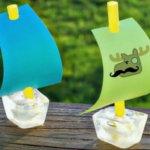Hot water supply issues of the residential sector always remain relevant. In the presence of a centralized supply of hot water, as a rule, in the summer, city boiler houses stop for preventive repairs.
In addition, in the summer the “great relocation” of most of us begins in summer cottages, where there is no centralized hot water supply at all. The best option for solving this issue is to install a boiler (water heater). You just need to choose the right boiler and all issues will be resolved. True, choosing the only option of many sentences is not always easy.
Analysis of the proposed models allows you to divide them into several groups according to various signs. Firstly, according to the method of heating water. There are currently gas, electric and indirect heating boilers (from the heating system). Secondly, there are flowing water heaters and cumulative. Thirdly, all boilers have different power and may differ in the control system. By determining which boiler to choose based on the method of heating the water, you should pay attention to several points. According to some indicators, gas boilers (or columns) have significant advantages.
But for their work it is necessary to have a centralized gas supply, which may not be in the summer cottage. Installation of gas columns in multi -storey residential buildings, as a rule, is not allowed. Therefore, the only way out is to choose an electric boiler. The constructive difference between flowing and storage boilers is that in the second version, water heats up in the storage tank. The design of running water heaters is easier, since the tank is absent, and the water is heated by an electric heating element, which is turned on with an open tap. Such boilers are more compact, but their performance largely depends on the pressure of the water and the power of the heater.
Cumulative boilers are more popular and are used more widely. The principle of their work is quite simple. The container is filled with water and electric heating. Thus, water is heated regardless of whether water is turned on or not. The design of the accumulative boilers is more complicated. The boiler is equipped with a control unit with a thermostat, which allows you to adjust the maximum water temperature, as well as maintain a given temperature. Automation will block the supply of water with a filled tank capacity and ensure its supply as heated water is used. Electric heaters, as a rule, are equipped with overheating and excessive pressure.
Different products of products can differ in the design of the water heating unit. Boilers are distinguished, where the heater is installed directly in the tank (direct heating), as well as in a separate chamber (indirect heating). The second option provides simple heating care and its longer operation. Before choosing a boiler, you should also pay attention to the maximum tank capacity. Today manufacturers offer products with a capacity of 80 to 200 liters. As practice shows, for a family of 3-4 people, a 100 liter boiler is quite enough. The installation of electric boilers is not difficult. The only one needs to pay attention to is the installation of a separate power line, given that the power of the heater is usually at least 2 kW. In addition, at the input of cold water, it is necessary to mount a shut -off valve and check valve.





